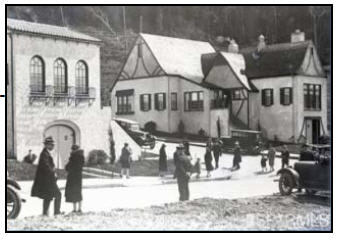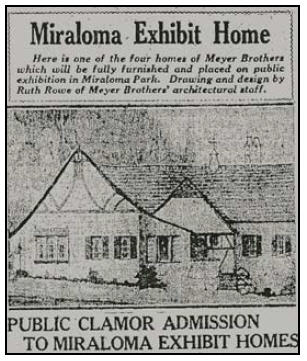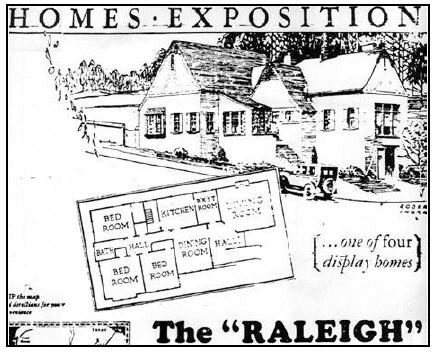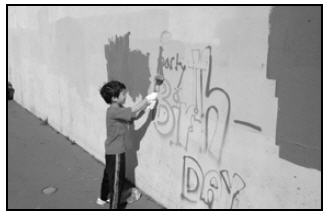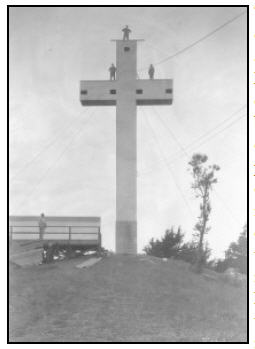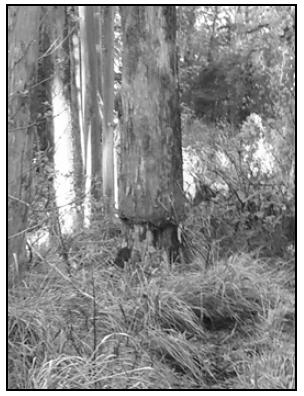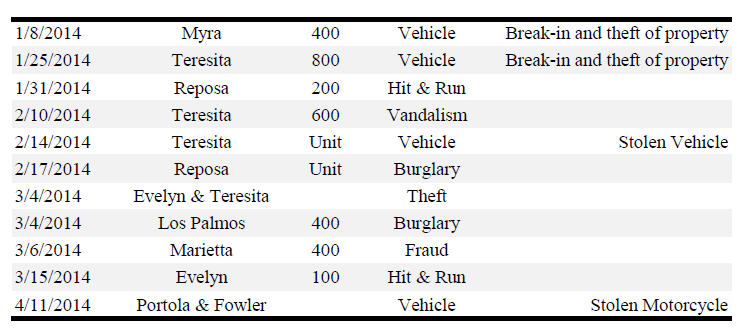News & Events
Miraloma Life: May 2014
- It’s Fiesta Time !
- From the President’s Corner
- Miraloma Park History: Special Feature “The Raleigh” designed by Ruth Rowe
- Graffiti Abatement in Miraloma Park
- Miraloma Park History: Special Feature “Mt. Davidson Cross in a Historic 1928 Photo”
- From the Safety Committee
- April 3, 2014 Board Meeting Highlights
- Airbnb: the War on Zoning (and Other Laws)
- Mt. Davidson Park Vandalism
It’s Fiesta Time !
- Mark your calendar for the MPIC Spring Fling Fiesta and save the date:
- Saturday, May 17, 3:00 to 6:00 PM
- MPIC Clubhouse 350 O’Shaughnessy Blvd. at Del Vale
Join your Miraloma Park neighbors for free and fabulous food catered by El Tonayense, refreshing drinks, and bouncy house fun!
From the President’s Corner
by Robert Gee, MPIC Board President
Spring Fling on Saturday, May 17, 2014 from 3 PM-6 PM. I hope to see all of you at the Spring Fling event at the clubhouse. This is a great opportunity to meet your neighbors, make new friends, have your kids meet other kids, welcome new homeowners to Miraloma Park, and meet and talk with MPIC board members. We are again having a taco truck, plenty of drinks, and a bouncy house for the kids.
Results of Supervisor David Chiu’s Legislation to Legalize Illegal Secondary Units. On March 24, 2014, the Board of Supervisors Land Use and Economic Development Committee voted to forward Supervisor David. Chiu’s legislation to the full board for consideration. The legislation was forwarded without recommendation to approve. I want to thank MPIC board members Karen Breslin and Karen Wood and MPIC member Vivienne Antal for attending the meeting and giving public comment in opposition to the legislation. The West of Twin Peaks Central Council along with Miraloma Park and other West Side neighborhood groups advocated with Supervisor Yee and other supervisors to amend the legislation to exclude RH-1 (attached) and RH-1D (detached) zoned single family neighborhoods.
On April 1, 2014, the full Board of Supervisors voted 8-2 to pass Supervisor Chiu’s legislation. Supervisor Norman Yee and Katie Tang voted no. MPIC very much appreciates Supervisor Yee’s efforts and support to maintain RH-1 zoning. Supervisor Yee had offered an amendment to remove single family homes zoned as RH-1D (detached) but not RH-1 from the legislation. That amendment failed by a 5 to 5 vote.
Over 80% of Miraloma Park consists of RH-1 homes. During the debate, some supervisors were asking whether homeowners would really want to incur the substantial cost of bringing their illegal unit up to code and getting the property reassessed. Supervisor Cohen challenged opposing supervisors on how they could vote to prevent a homeowner from doing what he wanted to do with his property. The legislation requires a status report to the board in 6 months.
What wasn’t discussed during debate was simply how this legislation was an end-run around the due process of revision of the Planning Code, effectively eliminating the zoning of single family neighborhoods—most of which are on the west side of San Francisco including Miraloma Park—and doing so without any environmental impact report or assessment of the ways in which it will fundamentally change the landscape of single unit neighborhoods. While this legislation does address legalizing existing, occupied secondary units and could result in protections for the renters of secondary units who are not protected by rent control today, it also opens the door to wholesale creation of new secondary units. It could allow for every RH-1 zoned house on the west side of the city to become two separate smaller flats. MPIC will continue to oppose attempts to downgrade RH-1 zoning.
Update: April 18, Mayor Lee, despite many community requests for veto, signed the legislation, making it law in San Francisco.
Supervisor Yee’s Participatory Budget Project. As I write this article, District 7 residents are tentatively scheduled to vote on May 1, 2 and 3 on a wide variety of proposed projects submitted by District 7 residents. These projects will be funded by $100,000 designated just for District 7 and another $250,000 designated for pedestrian safety improvements. Voting can be done online at www.sfpb.net or you can cast your vote at Supervisor Yee’s office at City Hall. The proposed projects impact many different parts of District 7 including some close to Miraloma Park. This is a great opportunity to participate in a democratic process affecting our Supervisorial District, so when voting does open up on May 1-3 please do take a few minutes to go online, review the projects, and vote.
June 19, 2014 MPIC Election Night: Meet Supervisor Norman Yee. June 19 is the annual MPIC Election Night (6:30-8:00 PM at the Clubhouse. Please mark your calendar to come down to vote for the slate of officers and directors. The June issue of the Miraloma Life will publish the slate of candidates. Names may also be placed in nomination May 15 at the MPIC Clubhouse, 350 O’Shaughnessy at Del Vale. Voting will take place from 7:00 to 8:00 PM.
I am pleased to announce that Supervisor Norman Yee will be at the Clubhouse at 7:00 PM to meet everyone and give an update on local and city issues and his priorities and to take your questions. Please join us, as this is Supervisor Yee’s first meeting with Miraloma Park residents.
Miraloma Playground. There is still no decision by the Recreation and Parks Department (RPD) about whether they will designate 2012 Clean and Safe Neighborhood Parks General Obligation Bond funds to repair Miraloma Playground. As you will recall, Miraloma Playground was rated one of the City’s failing parks and given a grade of “D” by the SF Parks Alliance. Supervisor Yee is advocating to RPD for funding to repair Miraloma Park Playground. In the meantime, on April 2, 2014, the RPD Commission Capital Committee was scheduled to Playgrounds Task Force” to identify project criteria and provide recommendations to the Commission on playgrounds that are a priority for renovation with the 2012 Bond. It’s expected that this task force will start meeting at the end of April and through the beginning of the summer. In the meantime, MPIC will invite a representative of RPD to address the board on the status of funding repairs.
Teresita Blvd Traffic Calming and Pedestrian Safety. On April 4, I went to City Hall and gave testimony at the SFMTA Engineering Public Hearing to support the planned installation of new stop signs scheduled to be installed at various streets that feed into Teresita Blvd, including Verna, Los Palmos, Foerster, Molimo, Rio Court, El Sereno, Arroyo Way, Gaviota Way, Isola Way and Juanita Way. Although the signs may have limited impact on speeding traffic that is so problematic along Teresita Blvd, they are needed to prevent cars from rolling onto Teresita Blvd as well as to allow pedestrians to cross these side streets and generally clarifying right-of-way. These new stop signs are just the beginning of what we hope is the completion of the remaining phase of the Teresita Blvd traffic calming and pedestrian safety project on which MPIC has worked with SFMTA for almost 8 years. Traffic calming measures tentatively planned for
Teresita Blvd include additional speed humps, bulb outs, and channeling islands. When SFMTA announces the final plans, MPIC will hold a community meeting to discuss them. I want to thank Miraloma Park resident Todd Hurley for taking the time to come down and give public testimony in support of the stop signs.
Miraloma Park History: Special Feature “The Raleigh” designed by Ruth Rowe
by Jacquie Proctor
While notable architects such as Julia Morgan and Bernard Maybeck designed homes in nearby St. Francis Woods and Forest Hill, who were the designers of Miraloma Park homes? Since most pre-WWII homes in Miraloma Park were built in groups by the Meyer Brothers as “spec” houses rather than individual commissions, their designers are likely less well known and may be lost to history. It was unusual for a designer’s name to be publicized like the Meyer Brothers did in their advertisement for this home. Like nearby Balboa Terrace “spec” houses designed by architect Harold G. Stoner, however, many Miraloma Park homes feature unique details that seems to reflect the work of professional designers, as I recently discovered about 201 Juanita Way. The home’s Storybook style details of handhewn halftimbering, multiple gables, dovecotes, dormer and bay windows – some featuring unique mullions dotted with wood circles, are the work of Ruth Rowe, a designer for the Meyer Brothers. Inge Horton, the author of Early Woman Architects in the San Francisco Bay Area, recently shared her information about Ruth with me, including this advertisement for the “Miraloma Exhibit Home”.
Ruth Rowe was born in Iowa in 1893. According to the 1900 census, Ruth was the youngest of three children. Her father, William, was a farmer born in England. Her mother, Sophia, was from the Isle of Man. By 1910, she and her parents had moved to warmer climate in sunny Santa Barbara, CA. A decade later, she was living alone in Berkeley at 2039 Shattuck Ave and then moved to 3908 Cerrito Ave. in Oakland. She attended UC Berkeley in 1919, but did not graduate. Inge Horton notes in her study of female architects, “The fact that she did not graduate explains that she worked as an employee and did not try to become a licensed architect. It had the advantage that she did not have to solicit commissions.” By 1924, she was working as a draftsperson for McWethy & Greenleaf and then the Meyer Brothers in 1927. Around 1930, she moved to Carmel, the home of many Storybook style cottages. More research is needed to find out what she did there before 1960, when, at the age of 67, she started working as a draftsman at Fort Ord. She died in Carmel in 1976 at the age of 83.
“The Raleigh” at 201 Juanita Way was one of four Miraloma Park English and Spanish style “exhibit homes” built in 1927 by the Meyer Brothers for their “Modern Homes Exposition.” The four furnished homes were advertised to be open every day for at least four weeks, with late night openings to 9 PM on Tuesday and Friday evenings. The ad noted their unique architectural designs and the latest in built-ins and equipment such as a Kohler Electric dishwasher and a radio den. The “modified English” design of the “Raleigh” and the “Spanish Miraloma” models were described as a “trifle more pretentious and costly … in keeping with the natural beauty of the location and surroundings. (The adjacent forest on Mt. Davidson did not become a City park until 1929). The other two “Sunshine Gables” and the “Portola” featured “dainty beauty and compact convenience.” All four homes featured five rooms plus a social hall or playroom running the entire width of the basement.
Typical of the low turnover in the residency of Miraloma Park, this home recently sold for the first time in fifty years. To learn more about the history of Miraloma Park, see my website at www.MtDavidson.org. If you are considering new windows, garage door, or other changes to the architectural details of your house, you might check out the Miraloma Design Guidelines at www.miralomapark.org/about/design-guidelines/ to learn more about
the Period Revival or Art Deco styles in our neighborhood.
To learn more about to research the history of your home, check out: sfpl.org/index.php?pg=2000028001.
Photograph courtesy of John Balestreri with Barbagelata Real Estate.
Jacquie Proctor has lived with husband and son in Miraloma Park since 1980, is a former MPIC board member, the author of San Francisco’s West of Twin Peaks and Bay Area Beauty: The Artistry of Harold G. Stoner, Architect, and leads architectural and history tours for San Francisco City Guides, including one of Mt. Davidson Park on May 18 at 10AM.
Graffiti Abatement in Miraloma Park
This dedicated Miraloma Park graffiti abatement volunteer (age 7!) is serious about protecting his neighborhood from blight. He’s a great role model and the MPIC Board of Directors gratefully thanks him for his excellent work on behalf of all of us.
The low incidence of graffiti in Miraloma Park is not accidental: it is the result of the rapid response of concerned residents, like our young volunteer shown here. If you’d like to help prevent blight by abating graffiti in our neighborhood, please contact Sue Kirkham,415-333-9840. Sue will provide supplies and instructions. If you cannot assist by painting out or cleaning off graffiti, please call 311 as soon as possible to report it. Thank you!
Miraloma Park History: Special Feature “Mt. Davidson Cross in a Historic 1928 Photo”
by Jacquie Proctor
The 103-foot high cross presently sitting atop San Francisco’s highest hill was dedicated in 1934. It was built to last with 750 cubic yards of concrete placed around 30 tons of reinforced steel that is anchored in a concrete block foundation that goes down 16 feet into the bedrock below. Many may not know that the massive solidity of this structure may be due to its being the 5th cross built on Mt. Davidson for the annual Easter Sunrise event. The first cross was erected on Mount Davidson in 1923 for an Easter Sunrise Service organized by James Decatur and led by Dean J. Wilmer Gresham of Grace Cathedral. With over 5,000 hiking before dawn to attend, the event organizers decided to continue it every year thereafter. Built in what was once a remote area of San Francisco, the 40-foot high wooden cross lasted for two more Sunrise Services before it was burned down during December 1925 by ”young boys building campfires too close to it.” A second and much more elaborate replacement cross was built in 1926. It was described as being nearly 100-feet high. Wired with electrical lamps, it was the first to be illuminated every night during the week before Easter.
Few pictures of the older crosses exist, but thanks to John T. Williams, I am able to share, with his permission, newly discovered and copyrighted images of what may be the only ones existing of the 1926 Mt.Davidson Cross being painted on March 3, 1928. In the picture see John’s father, James Williams, on top of the cross, with two other crew members just below.
The early crosses were located on the eastern Downtown viewpoint atop Mt. Davidson, at the edge of the old property between Leland Stanford and Adolph Sutro. The cross pictured above didn’t make it through the winter, being destroyed by flames in December 1928. By March 1929, the San Francisco Examiner had reported son lighted with wands of electrical lights.” It was also described as being more permanent, 76-feet high, and decorated with 300 lights. Purchase of the summit by the City for a public park was also completed in 1929.
One more temporary cross would be built on the hill before the fireproof one was constructed in 1934 at a new location further west. Surviving earthquakes and a trip to the California Supreme Court, this cross was once lit year round. Lighting is now restricted to two days a year and the permanent lights were removed to settle the lawsuit. The new owners, the Council of Armenian Organizations of Northern California, now cover the cost of a portable generator to continue the tradition of illuminating America’s largest cross on Easter Eve with spotlights totaling 48,000 watts. See more historic pictures from John Williams at http://mtdavidson.org/mount-davidsoncross/.
Free City Guide Walk of Mt. Davidson: May 18, 10 AM
You are invited to join Miraloma Park resident and author of San Francisco’s West of Twin Peaks, Jacquie Proctor, on her guided tour of Mt. Davidson Park for San Francisco City Guides, Sunday. May 18 at 10 AM (rain cancels). Learn about the historic landscape, the campaign to make the City’s highest hill a public park, and the gigantic cross dedicated by President Franklin D. Roosevelt in 1934 on this 1.5 hour stroll. Meet at the 36-line bus shelter at Dalewood and Myra Ways.
From the Safety Committee
Agua Way arrest. An 18-year-old was arrested 3/5/14 on the unit block of Agua for selling marijuana to other juveniles. Residents have reported suspicious activity in that area, and this arrest resulted from a call to 553-0123 (non-emergency) by a concerned resident. Ingleside District Captain Timothy Falvey advises the following:
1) Municipal Park Code violators (Sec 3.15) will be cited, rather than admonished, when identified at illegal campsites in Mt. Davidson Park. (Citations provide documentation of violations enabling the Recreation and Parks Department to apply for Civil Harassment Orders, (which are civil restraining orders) to deter repeat violations.
2) Additional SFPD patrols will be made around the Noon hour and early afternoon in response to youth trespassing on front steps and yards of Juanita Way and Teresita homes near the Portola Strip. Officers by law may not cite trespassing individuals unless owners request enforcement. Captain Falvey suggests that impacted residents request a 25 MPC (Municipal Police Code) sign to post by calling Ingleside Station for information. When posted, this notice allows police to cite without the homeowner being present. MPIC will meet with school officials to discuss internal sanctions to revoke off-campus privileges for students cited by police. Advocating for closed campus policy may be necessary.
3) 400 block of Los Palmos burglary (residence under construction). Residents are advised to tell contractors and sub-contractors to secure their tools and/or they take tools home with them at the end of each work day and to confirm with contractors that premises will be secured at the end of each work day.
4) Late night and early morning passing calls ordered in response to recent auto break-ins (500 block of Bella Vista, 100 block of Molimo, 400 block of Marietta Drive, Encline Court, Tower Market parking lot). During April, Ingleside officers will emphasize auto boosting crimes. Officers will check on those who are on probation and living in the area known to be involved in such crimes.
5) Video cameras. Security video cameras are highly useful in solving crimes, especially burglaries and robberies; the SFPD is compiling a list of the locations of privately maintained cameras to be consulted as needed in the future in the investigation of these crimes.
April 3, 2014 Board Meeting Highlights
Treasurer’s Report
MPIC Account Balances as of 3/31/2014
Total Bank Accounts: $37,557.84
Total Liability Accounts: $9,430.00
Overall Total: $28,127.84 (exceeded by $955.64 February’s net worth)
Reserve Account (for Clubhouse repair expenses) $14,448.
New process: MPIC will now use PayPal for processing rental payments and deposits.
Discussion: results and possible effects stemming from the SF Board of Supervisors’ approval of legislation legalizing secondary units in San Francisco. Supervisors Yee and Tang voted no on the legislation. Safety: see From the Safety Committee on this post.
Streets and Transportation: The Sustainable Streets Division of the San Francisco Municipal Transportation Agency hearing Friday, April 4, 2014 at 10:00 AM plans installation of stop signs at corners of streets feeding into Teresita Blvd., along with other proposed traffic related changes across the city.
Community Resiliency: After touring the quake ravaged city of Christchurch, New Zealand, Daniel Homsey recommended that MPIC take a proactive approach in continuity of operations to assist residents in preparing for and recovering from a major disaster.
D7 Participatory Budget list of proposed projects has been whittled down to 15. Voting will take place online from May 1st -3rd
Airbnb: the War on Zoning (and Other Laws)
MPIC has received complaints about Airbnb rentals in Miraloma Park being used as hotels, with “people coming and going at all hours of the day and night” and directly impacting the quiet nature of our neighborhood. The Coalition of San Francisco Neighborhoods via the West of Twin Peaks Central Council forwarded this communication from former Planning Commissioner Doug Engmann. Please let MPIC know you would like to work on possible legislation or a Charter amendment that ensures our laws are enforced and prevents citywide zoning changes to allow these hotel uses in our neighborhoods.
(Italics below were added by the Editor)
April 21, 2014
Dear Neighborhood Leader,
As a former neighborhood association president and former member of the [San Francisco] Planning Commission, I have worked for many years to preserve our residential neighborhoods. I am increasingly concerned about the proliferation of short-term hotel room rentals to tourists in our neighborhoods, by both property owners and tenants, through online travel agencies like Airbnb and VRBO. As of last Fall there were more than 14,000 listings on AirBnb and VRBO offering to rent apartments and homes to visitors spread through all the neighborhoods in our city.
Renting of a residential unit for less than 30 days is illegal under the Planning Code as a violation of zoning laws the Administrative Code, and (in some cases) health and safety requirements of the Building Code. Furthermore it violates provisions of the rent control ordinance and most landlord-tenant lease agreements.
AirBnb and other online portals continue to facilitate this illegal renting by tourists of residences in our neighborhoods with no regard to our local laws. More than two years ago, the City Treasurer determined that these short-term rentals were liable for the City’s hotel tax, yet Airbnb and the other portals have ignored this obligation. Meanwhile the market value of Airbnb has reached $10 billion and it has announced plans to expand additional services to their residential “hosts” and visitors such as services. Soon we will have full-fledged hotel businesses operating in our [residential] neighborhoods.
City Hall has reacted to this unlawful situation over the last two years with silence. Only recently has City Planning begun some enforcement action due to complaints from neighbors. AirBnb has ‘voluntarily” offered to collect hotel taxes in San Francisco beginning this summer— there’s been no offer to pay back taxes due—as they ready their business in preparation for a forthcoming billion dollar IPO.
Coincidentally, Supervisor David Chiu just introduced legislation that would legalize the renting of most San Francisco residences as hotel units by anyone who is a permanent resident of the city for 90 days per year when they are not present in the unit and 265 days when they are present. The Chiu legislation allows most of the 300,000 plus apartments and houses in the City to potentially become hotel units or rooms. He does this simply by redefining a “residential use” in the Planning and Administrative Codes to include renting out the unit as a hotel room, in essence rezoning every one of our neighborhoods to allow hotel uses in a residential unit as a matter of right.
I don’t need to explain to you what the potential impact of this legislation, nor the unchecked growth of these illegal tourist rentals, which erode the integrity and safety of our residential neighborhoods. But there are other important negative impacts to our City as well, such as the undermining of rent control and pushing up apartment rental and condo prices at a time when affordable housing is of concern to all San Francisco residents.
I urge you to take this issue up at your next neighborhood meeting, and if your group is concerned about these illegal and improper hotel uses in your neighborhood and city take the following actions: —contact your Supervisor immediately and tell him to oppose the Chiu legislation norman.yee.bos@sfgov.org; — contact Mayor Lee and tell him that having a City receptive to the tech industry does not mean that our City zoning laws can be violated with impunity, and ask him to enforce our existing laws prohibiting this activity mayoredwinlee@sfgov.org.
Regards,
Doug Engmann
Former City Planning Commissioner and former Member,
Board of Permit Appeals
Former President, Stanyan-Fulton Neighborhood Association
Mt. Davidson Park Vandalism
Girdling, also called ring barking or ring-barking, is the complete removal of a strip of bark (consisting of cork cambium, phloem, cambium and sometimes going into the xylem) from around the entire circumference of either a branch or trunk of a woody plant. Girdling results in the death of wood tissues above the damage. A branch completely girdled will fail and when the main trunk of a tree is girdled, the entire tree will die, if it cannot regrow from above to bridge the wound. Wikipedia: (en.wikipedia.org/wiki/Girdling)
The image at left shows a Mt. Davidson Park tree that has been girdled. Vandalism of trees on San Francisco’s public land—whether or not witnessed in progress— violate the SF Park Code and should be reported to the San Francisco Park Patrol at 415.242-6390.
Trees improve our air quality. The Worldwatch Institute, in its Reforesting the Earth paper, estimated that the earth needs at least 321 million acres of trees planted just to restore and maintain the productivity of soil and water resources, annually remove 780 million tons of carbon from the atmosphere and meet industrial and fuel wood needs in the third world. For every ton of new-wood growth, about 1.5 tons of CO2 are removed from the air and 1.07 tons of life-giving oxygen is produced (Urban Forestry Network; urbanforestrynetwork.org). Planting trees remains one of the cheapest, most effective means of drawing excess CO2 from the atmosphere (Arbor Environmental Alliance; arborenvironmentalalliance.com).
Miraloma Park Crime Report
Compiled by Jacob Koff from the Ingleside Station Newsletter
May NERT Trainings
Marina/Cow Hollow
St. Mary the Virgin
2325 Union St @ Steiner
Mondays
- May 5, 6:30p-10:00p: Class 1
- May 12, 6:30p-10:00p: Class 2
- May 19, 6:30p-9:30p: Class 3
- Memorial Day observed, May 26
- June 2, 6:30p-10:00p: Class 4
- June 9, 6:30p-9:30p: Class 5
- June 16, 6:30p-10:00p: Class 6
The goal of the SF Neighborhood Emergency Response Team (NERT) is to help San Franciscans to be self sufficient in a major disaster situation by developing multifunctional teams, cross trained in basic emergency skills. Visit www.sf-fire.org for more details.


